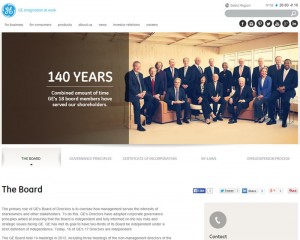 >Most companies now provide some information about the experience of a few of their staff, to try to give potential recruits an idea of what life might be like. HSBC have added a widget to the sidebar of these pages showing where this individual has worked.
>Most companies now provide some information about the experience of a few of their staff, to try to give potential recruits an idea of what life might be like. HSBC have added a widget to the sidebar of these pages showing where this individual has worked.
This is a neat way of demonstrating that working internationally is a genuine possibility.
 One of the biggest challenges that marketers face today is securing adequate budgets to drive real results in the digital space. However, there is more to this problem than budgets. The problems actually start at the top with corporate boards who don’t understand digital marketing in 2014. As a result, companies are making the wrong investments and marketing departments continue to struggle.
One of the biggest challenges that marketers face today is securing adequate budgets to drive real results in the digital space. However, there is more to this problem than budgets. The problems actually start at the top with corporate boards who don’t understand digital marketing in 2014. As a result, companies are making the wrong investments and marketing departments continue to struggle. Within four years, internet advertising will surpass television advertising to become the largest advertising segment globally. That news comes from PWC’s
Within four years, internet advertising will surpass television advertising to become the largest advertising segment globally. That news comes from PWC’s  Coca-Cola Life will be released in the U.K. in September of this year. This is the first new product release for Coca-Cola in the U.K. in eight years. The last big release was Coke Zero, which debuted in 2006 and was targeted to men seeking a no-calorie alternative to regular Coca-Cola.
Coca-Cola Life will be released in the U.K. in September of this year. This is the first new product release for Coca-Cola in the U.K. in eight years. The last big release was Coke Zero, which debuted in 2006 and was targeted to men seeking a no-calorie alternative to regular Coca-Cola. Last month, I shared the results of the
Last month, I shared the results of the 
